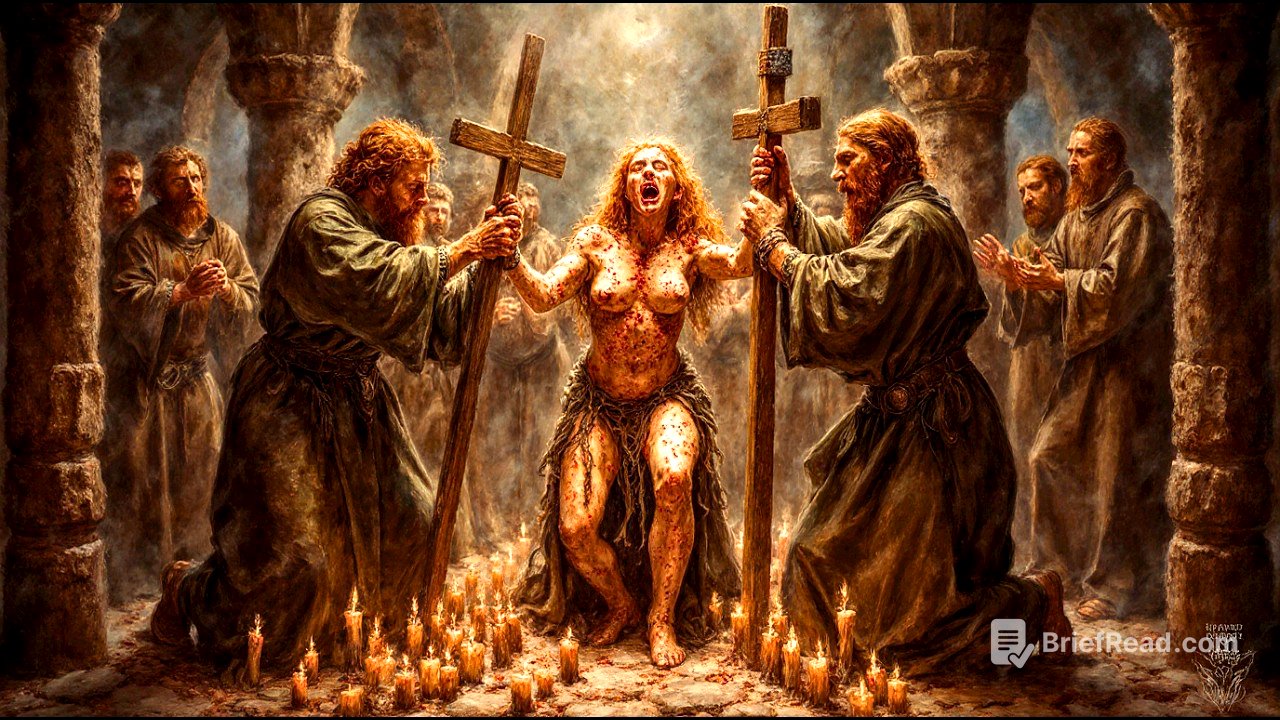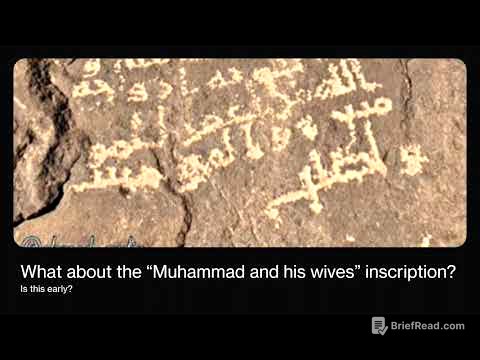TLDR;
This video explores the history of witch hunts in Europe, beginning with the societal anxieties and religious fervour of the late medieval period. It examines how the Inquisition, initially intended to combat heresy, gradually shifted its focus to witchcraft, fuelled by fear and superstition. The publication of the "Malleus Maleficarum" in 1487 provided a framework for identifying, interrogating, and executing suspected witches, leading to widespread persecution, primarily of women. The video concludes by noting the eventual decline of witch trials in the 17th century as reason and scepticism began to challenge the prevailing beliefs, but highlights the lasting scars and the dangers of fear-based persecution.
- The Catholic Church's unchallenged authority and the rise of superstition created an environment ripe for witch hunts.
- The Inquisition's methods, including torture, extracted confessions that fuelled the belief in a widespread diabolical conspiracy.
- The "Malleus Maleficarum" provided a pseudo-legal and theological justification for the persecution of women as witches.
- The witch hunts were driven by fear, envy, and the desire to find scapegoats for societal problems.
- Reason and scepticism eventually led to the decline of witch trials, but the legacy of fear and persecution remained.
The Age of Faith and Fear [0:00]
In medieval Europe, the Church held immense power, interpreting divine truth and enforcing belief as law. However, beneath the surface of faith, older, quieter beliefs persisted among the peasantry, who relied on folk remedies and charms. The Church dismissed these practices as ignorance, but they were essential for survival. Preachers spoke of demons and the devil, fostering fear and imagination, especially in times of hardship like failed harvests and sickness. This fear spread rapidly, setting the stage for something even darker.
The Black Death and the Search for Blame [1:41]
The Black Death devastated Europe, leading to widespread death and social upheaval. The Church, unable to provide answers or relief, faced questions about suffering and divine justice. It sought to blame heretics, leading to the rise of the Inquisition, which used fire to purify and silence dissent. However, unease lingered, and the devil's shadow seemed to lengthen, demanding new enemies. The Church, which had once dismissed magic, now saw witchcraft as an alliance with the devil, subtly shifting the focus from heresy to sorcery.
The Inquisition and the Seeds of Suspicion [4:35]
The Inquisition, initially intended to protect Christendom from heresy, became increasingly focused on identifying and punishing enemies of God. Old pagan beliefs and practices, particularly those of women who knew herbs and assisted in childbirth, were viewed with suspicion. Confession became the key to salvation, and torture was used to extract "truth." Inquisitors crafted stories of heretics worshipping the devil and plotting against Christendom, spreading fear and suspicion throughout Europe. This led to a society where anyone could be suspected of hidden evil, and the Inquisition inadvertently taught Europe how to suspect itself.
The Creation of Hell on Earth [7:38]
The Inquisition opened the door to the impossible, and fear walked through wearing the mask of reason. Documents from the tribunals spoke of night gatherings, secret feasts, and pacts with the devil, fantasies born of confession under agony, yet they became gospel. The church's judges wrote what they believed they had discovered, not realising they were writing the script of future nightmares. The idea of organised evil, of men and women consciously allied with hell, became truth by repetition. Every pyre was proof that the devil existed, every confession a warning that he could be anywhere. The shape of the accusation was changing, requiring only fear, and the Inquisition had learned how to destroy people.
The Hammer of Witches [9:19]
In 1487, the "Malleus Maleficarum" (the hammer of witches) provided a voice to the fear that had haunted Europe for centuries. Written by two Dominican inquisitors, it declared that witches were real, conspired with the devil, and could bring ruin to entire kingdoms. The book argued that disbelief in witches was itself heresy and taught how to recognise, interrogate, and destroy them. It claimed women were more vulnerable to temptation and that evil entered the world through Eve, making every woman suspect. The book spread rapidly, becoming a pseudo-scripture for witch hunts across the continent.
The Theology of Fear [11:38]
The "Malleus Maleficarum" gave fear a method, describing the devil's mark and sanctioning torture to reveal it. Confessions extracted under torture confirmed the book's prophecy and authority. Princes and bishops adopted its reasoning to strengthen their own power, and accusations became currency. The book taught that witches worked in secret covens, conspiring against all of Christendom, leading society to purge itself. To question the "Malleus" was to stand beside the accused, and its logic left no space for doubt. By the end of the century, Europe had found its new scripture of terror, promising purification through fire.
The Spread of Contagion [13:51]
The witch hunt spread like a contagion, beginning with quarrels, envy, and misfortune. In towns that had known famine and plague, people sought blame, and the Church had already given them a name for evil. Trials were small at first, but accusations multiplied, and names spilled out under pain and fear. Torture chambers filled, and judges prayed before sentencing, believing the pain they ordered was holy work. Entire families vanished, and the promise of salvation demanded sacrifice. Each burning became a spectacle and warning, a ritual disguised as justice.
The Consuming Fire [15:45]
Even secular courts adopted the theology of fear, and kings and magistrates began their own trials. To question witchcraft was to appear complicit. Faith and law merged into one machinery of accusation. The victims were rarely those who threatened power, but the poor, the old, the strange women who lived alone. They were interrogated until they confessed to impossible crimes, and the inquisitors wrote down every word as evidence of victory. The trials continued, each one proving the need for the next, and tens of thousands burned.
The Dawn of Reason [18:18]
By the 17th century, the flames had begun to fade as doubt entered the Church's own halls. Judges hesitated, and priests questioned the "Malleus Maleficarum". Reason stirred, and men trained in law and philosophy began to ask if the witches had ever existed. Scholars compared records and saw patterns, and logic began to dismantle belief. Skepticism reached the courts, and the law turned its gaze away from the stake. The enlightenment dawned with a question: Why did God allow such chaos in his name?
The Scars Remain [20:37]
Even as reason triumphed, the scars remained. Fields lay fallow in villages where witches had burned, and generations whispered the names of the condemned as warnings. The Church withdrew its inquisitors but did not apologise, leaving the memory to fade on its own. By the turn of the century, Europe looked back at its frenzy with disbelief, but the darkness still shifted, hunting the same kind of victim. The Church's war on witches had begun as fear, and fear, once sanctified, needs no devil to survive. The lesson remained buried among the ashes: that the greatest horrors are not born from rebellion against God, but from the desperate attempt to defend him.









